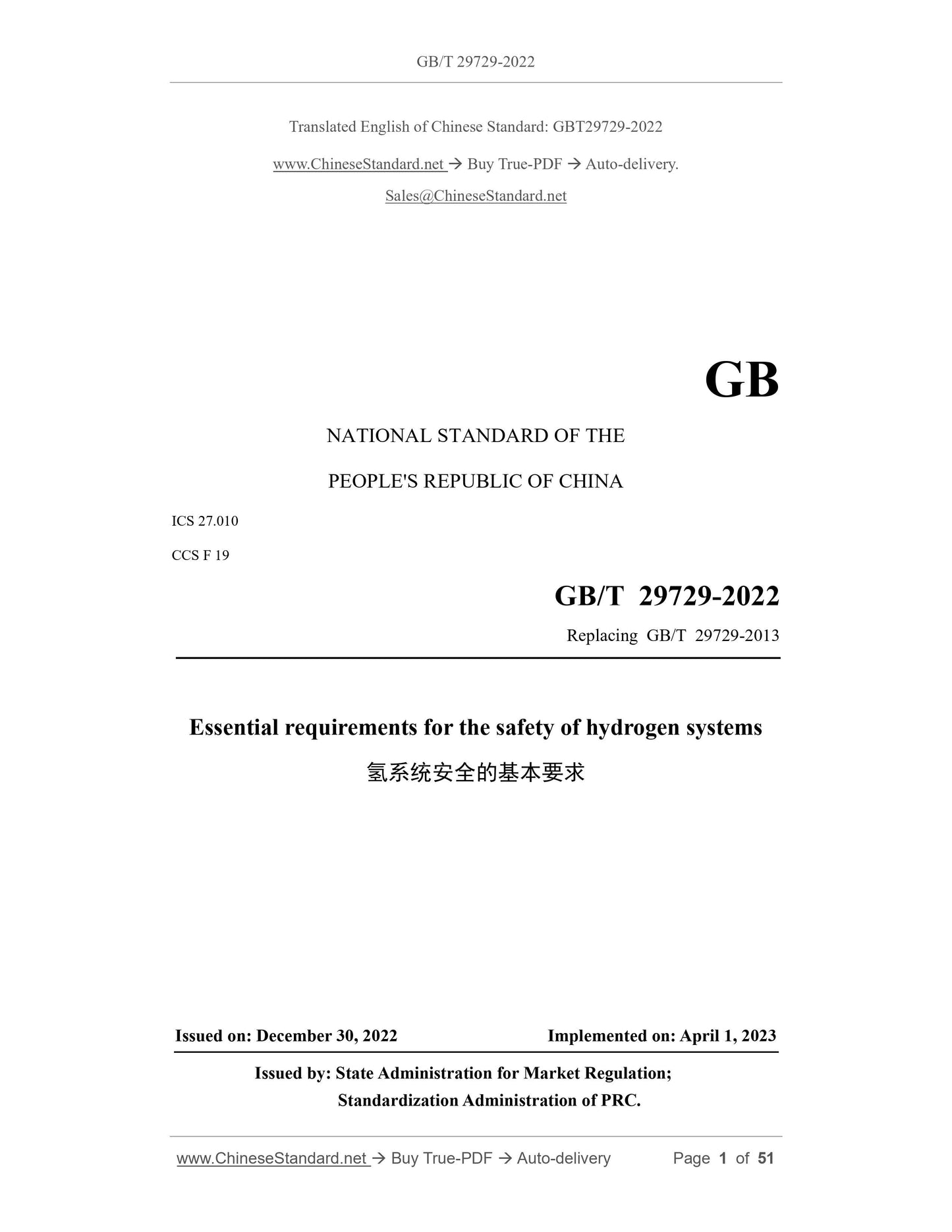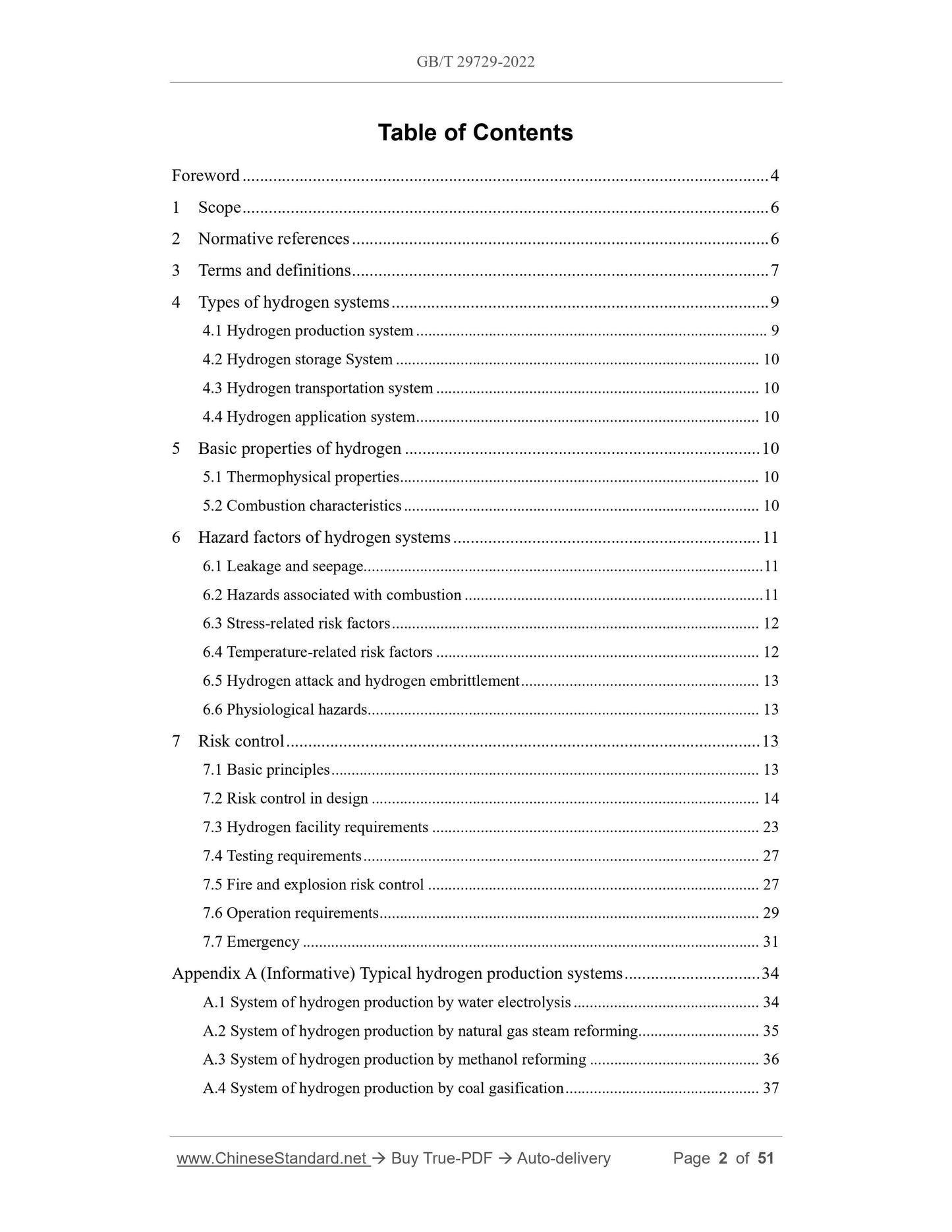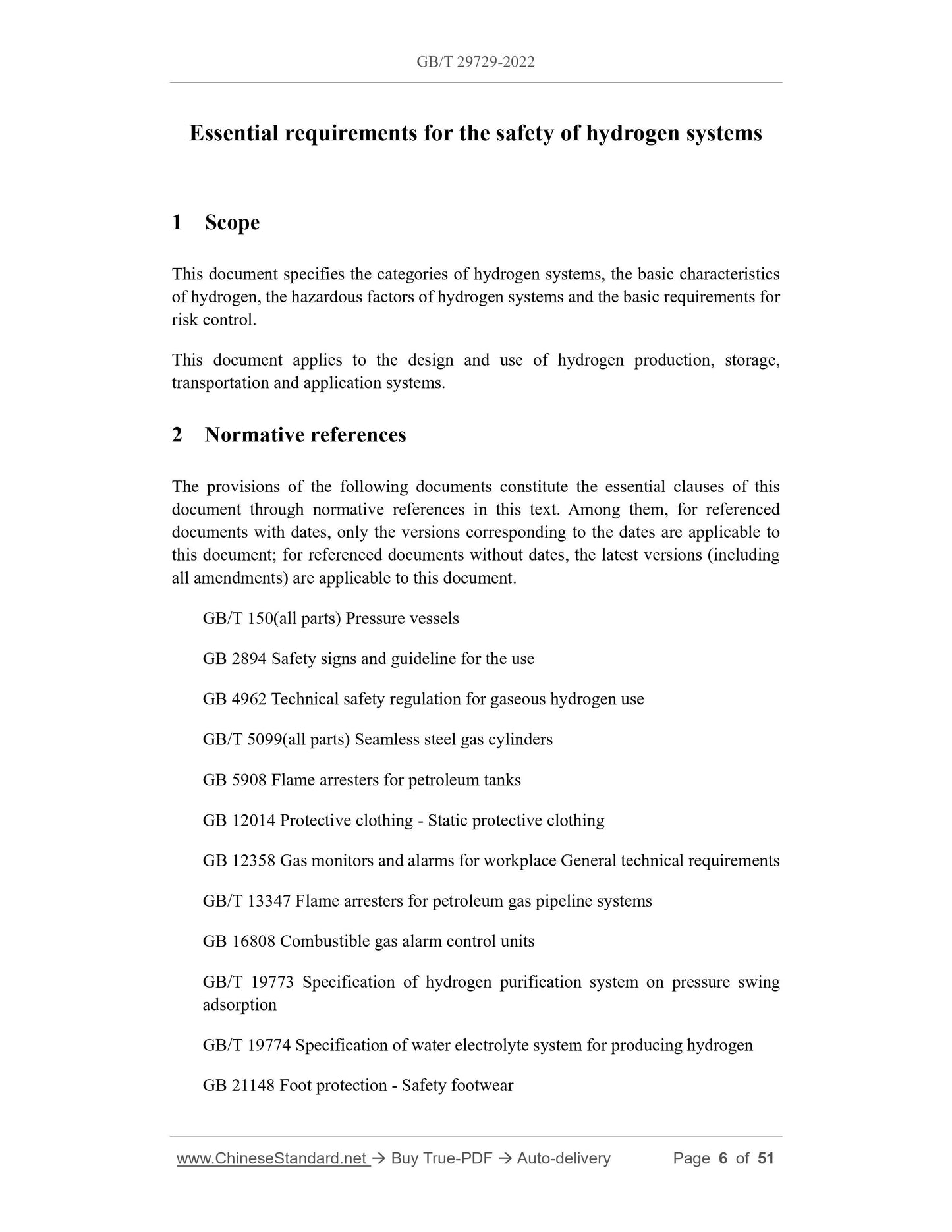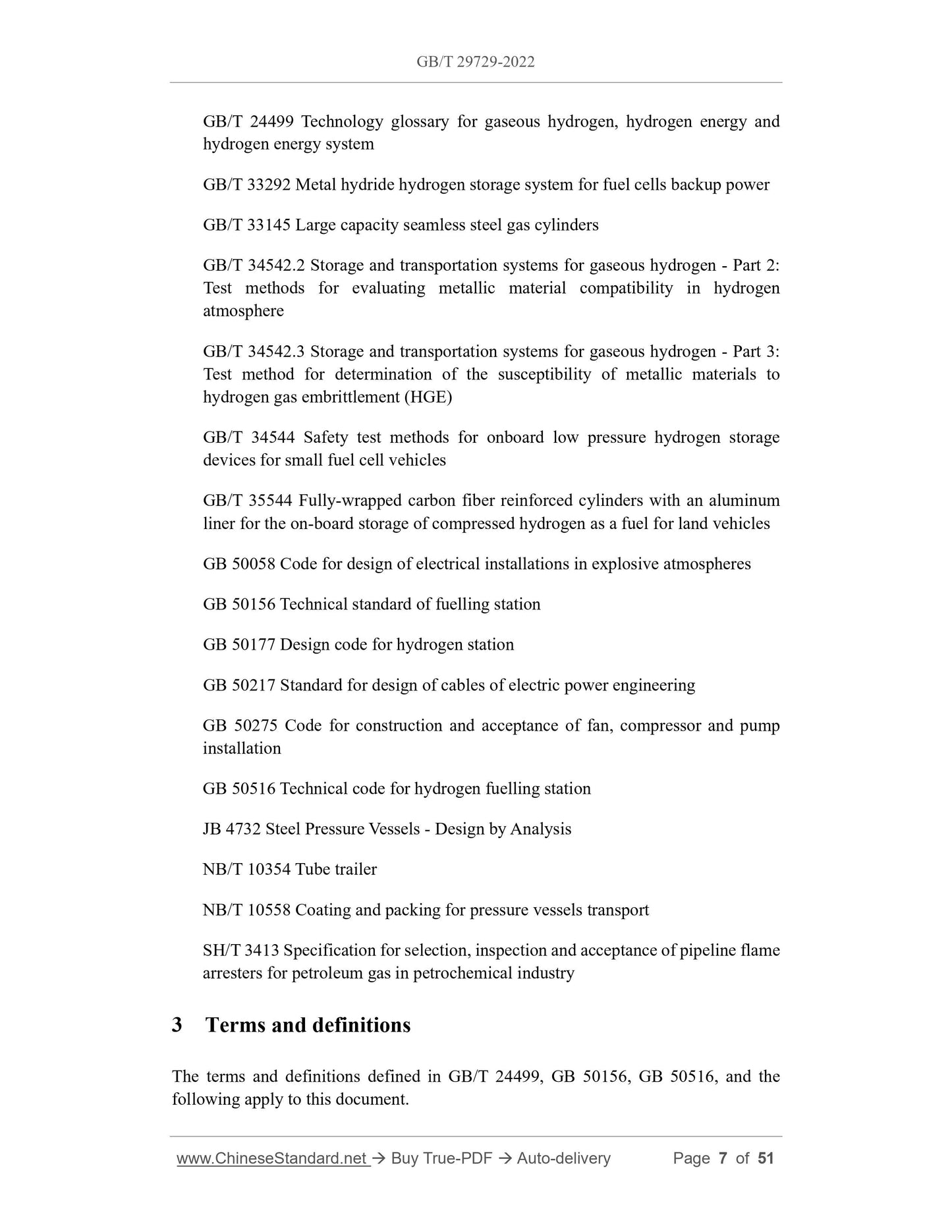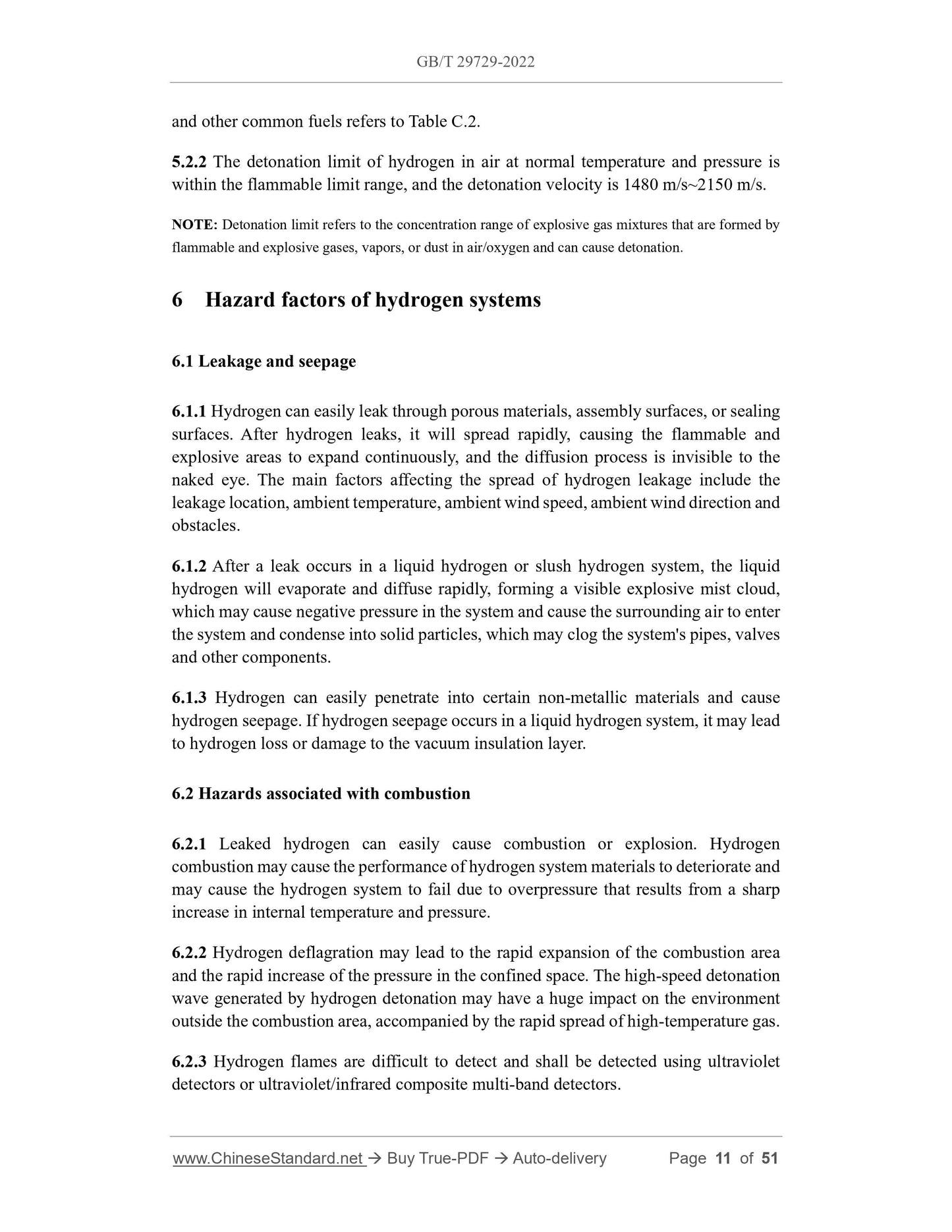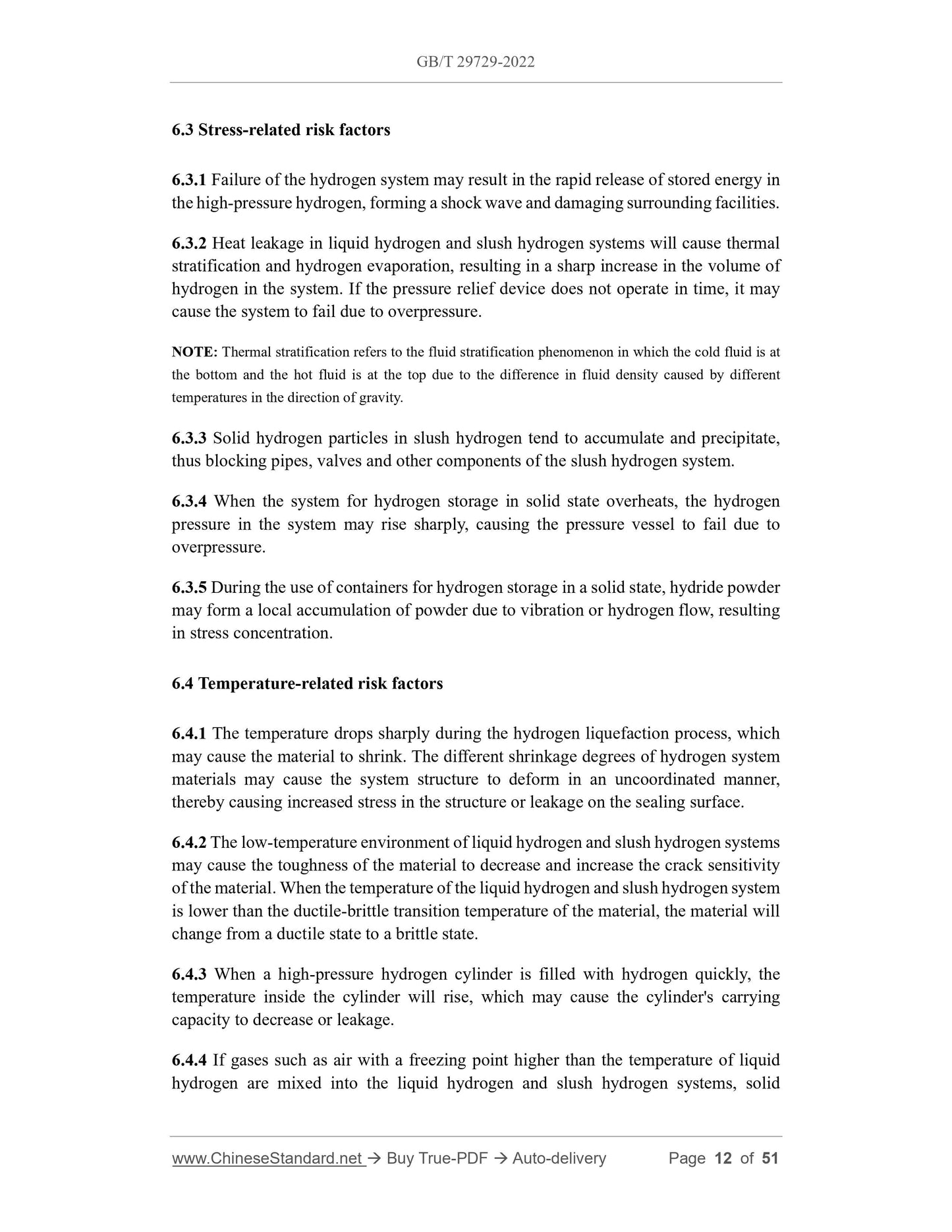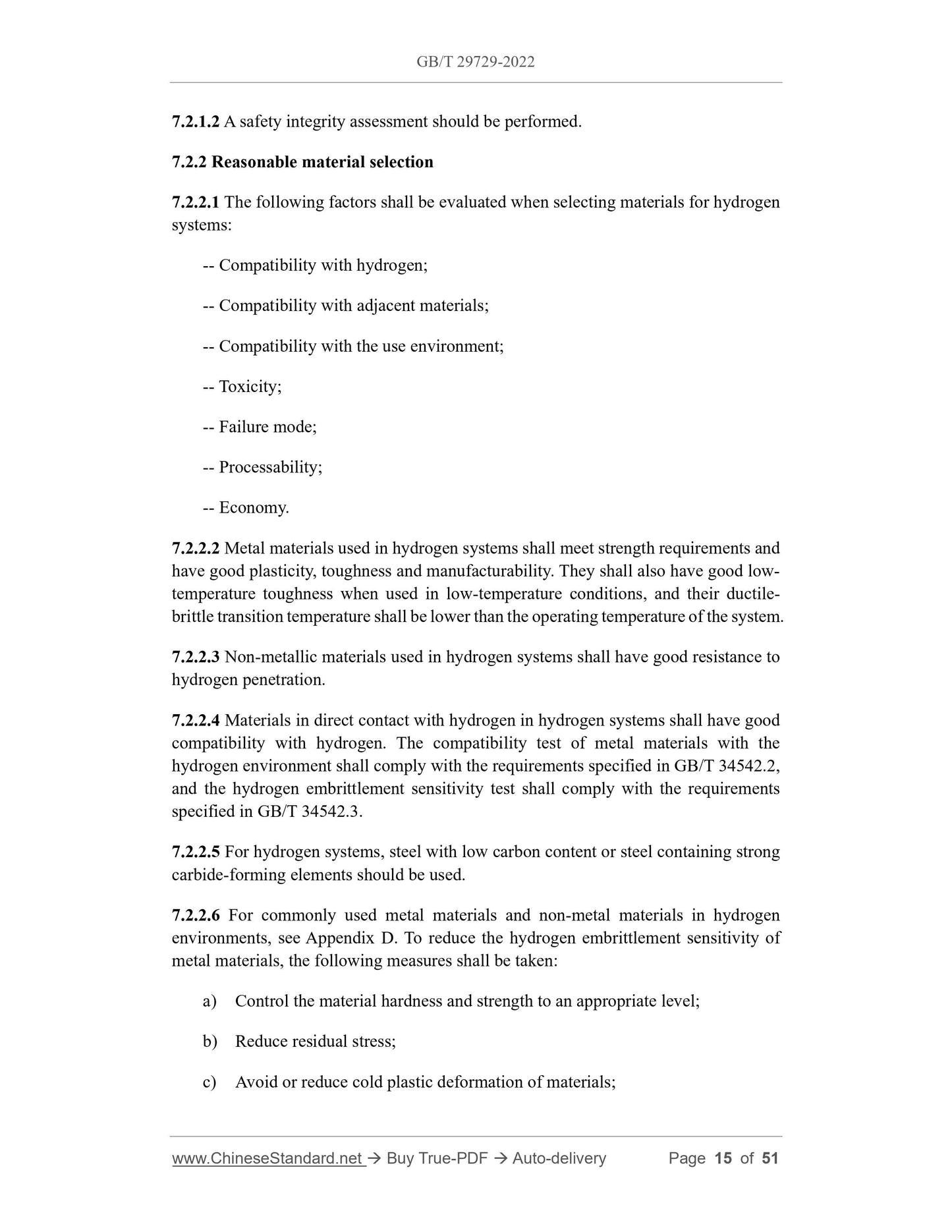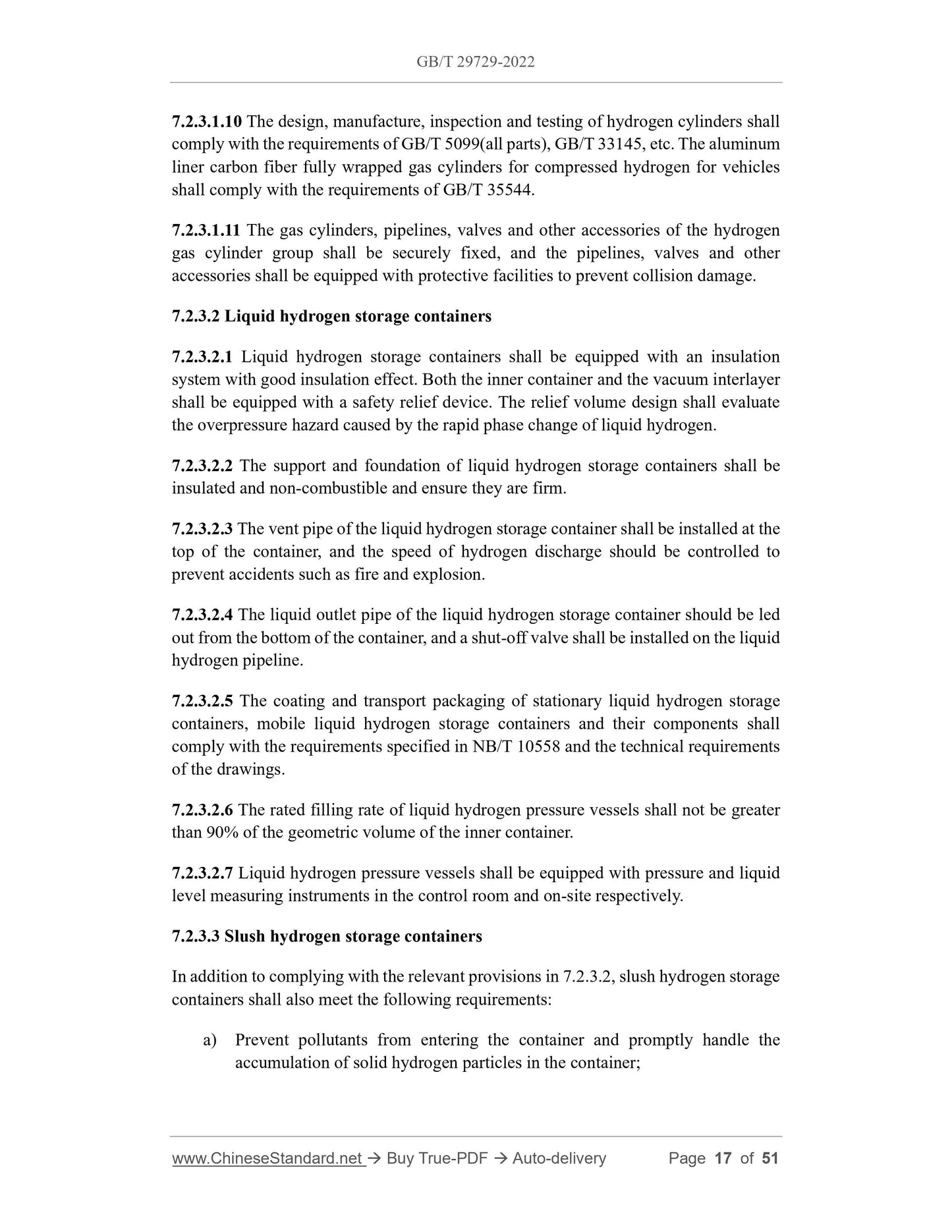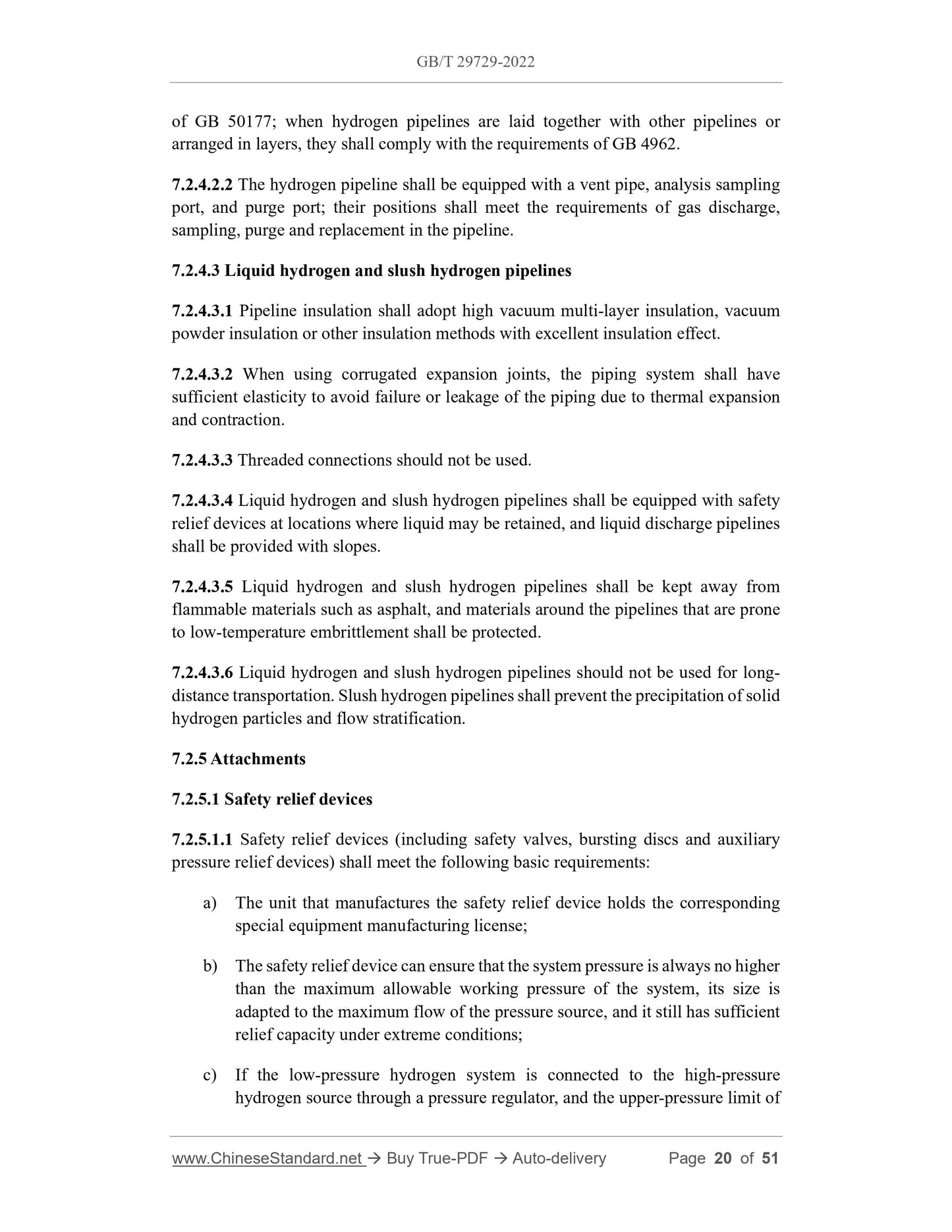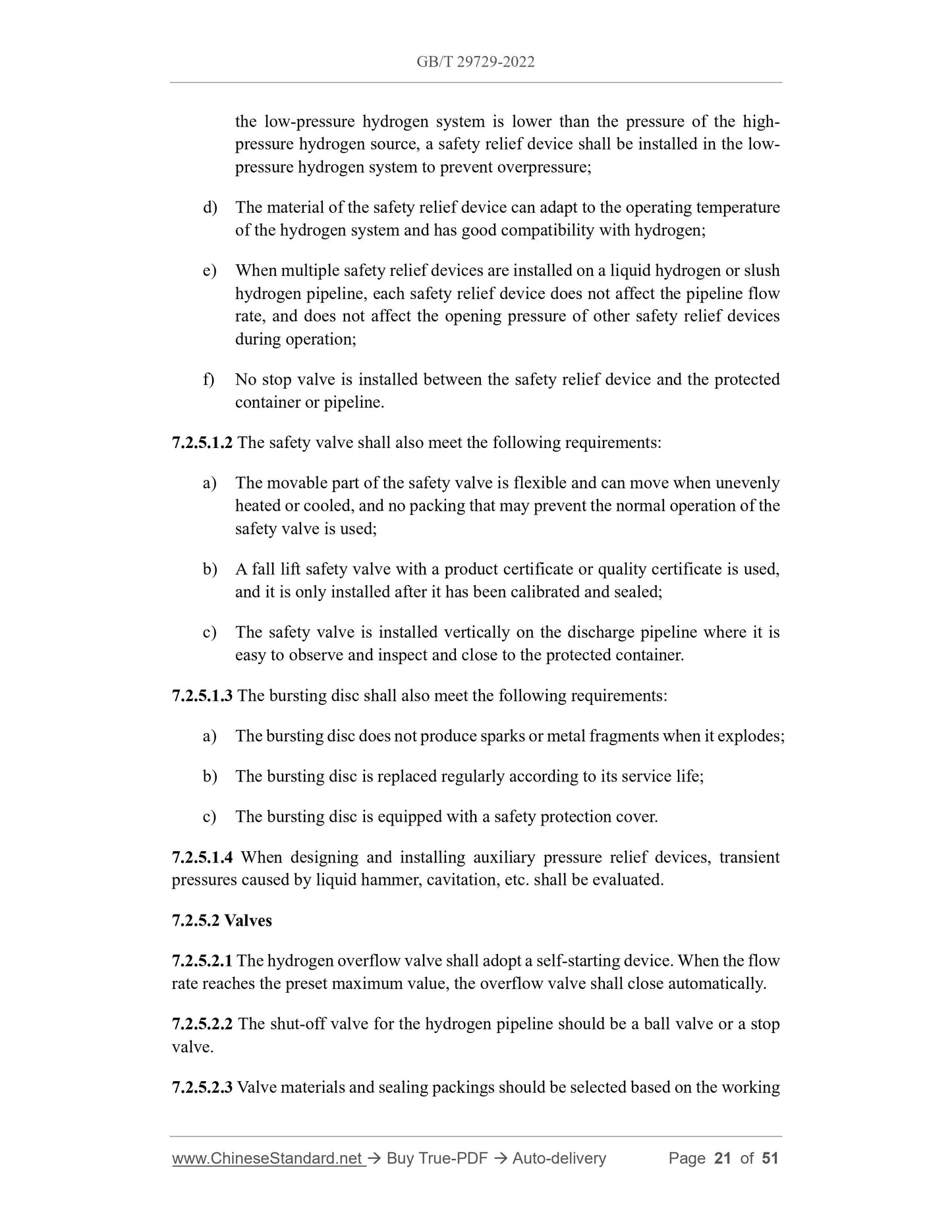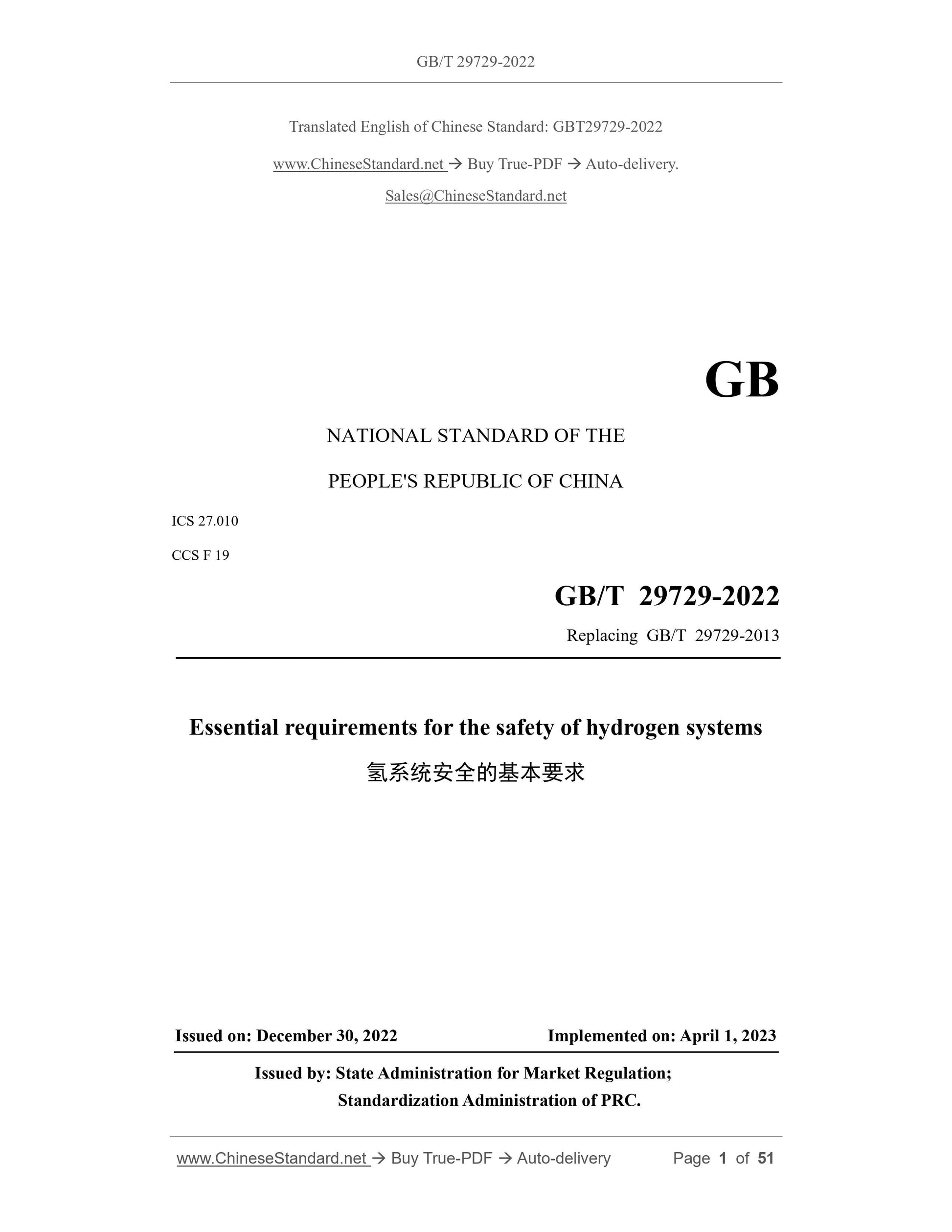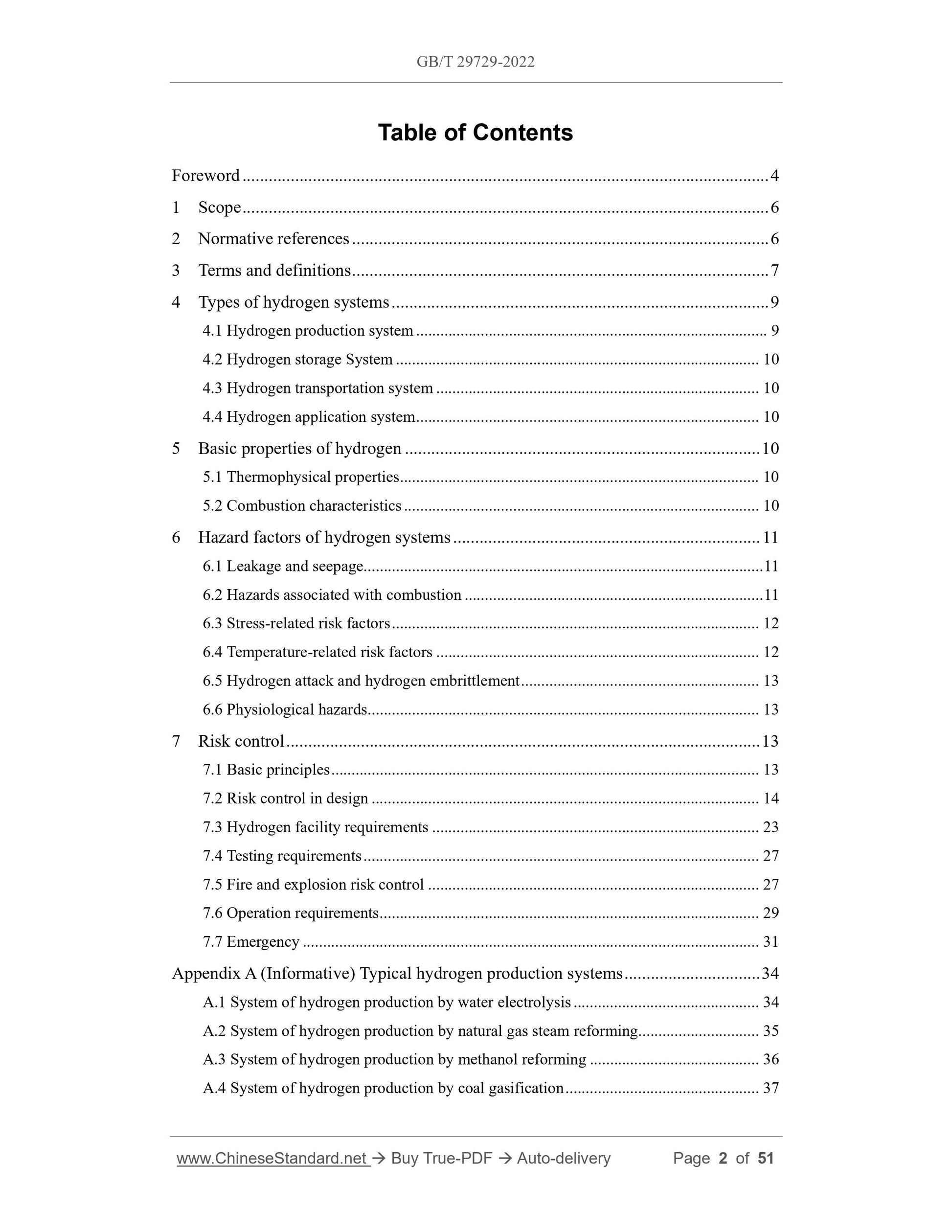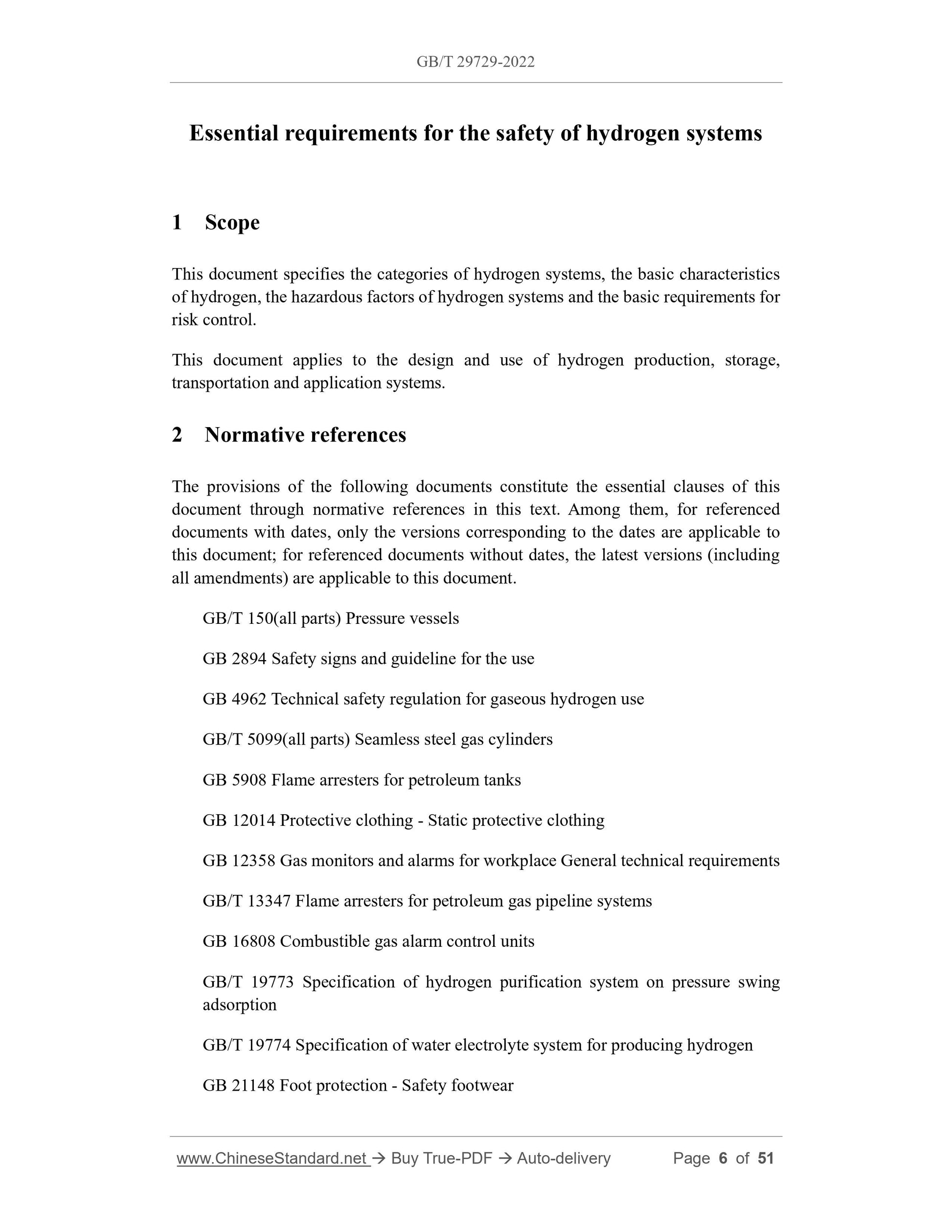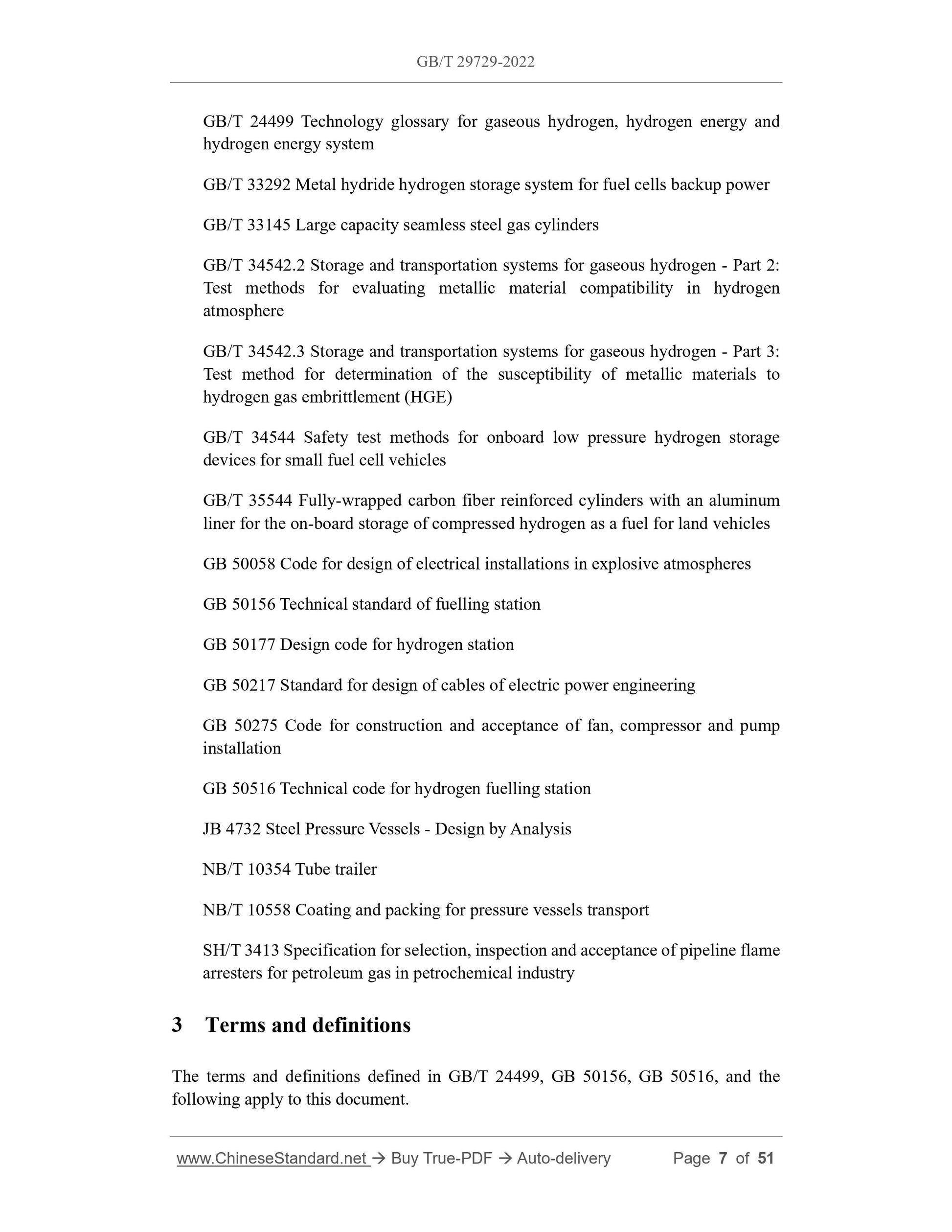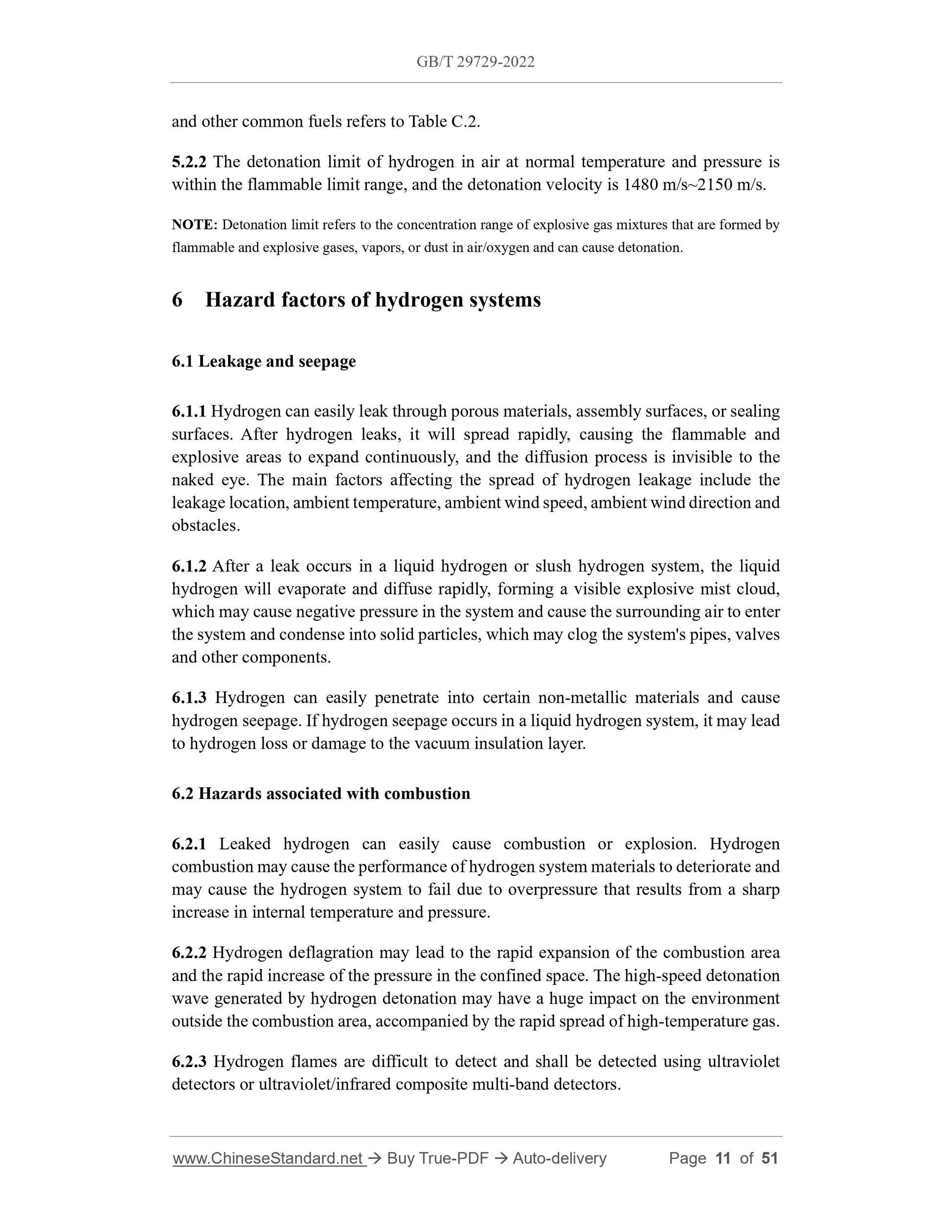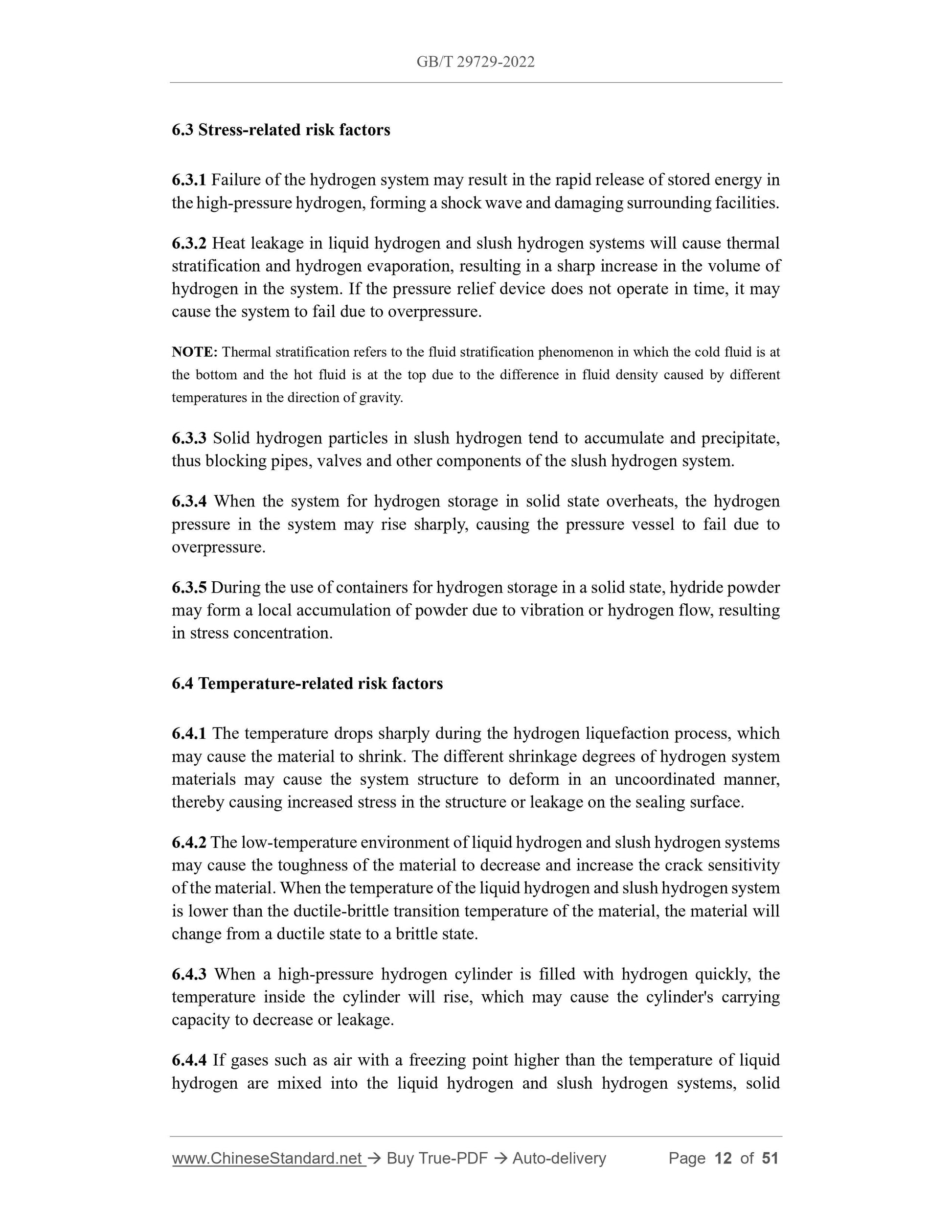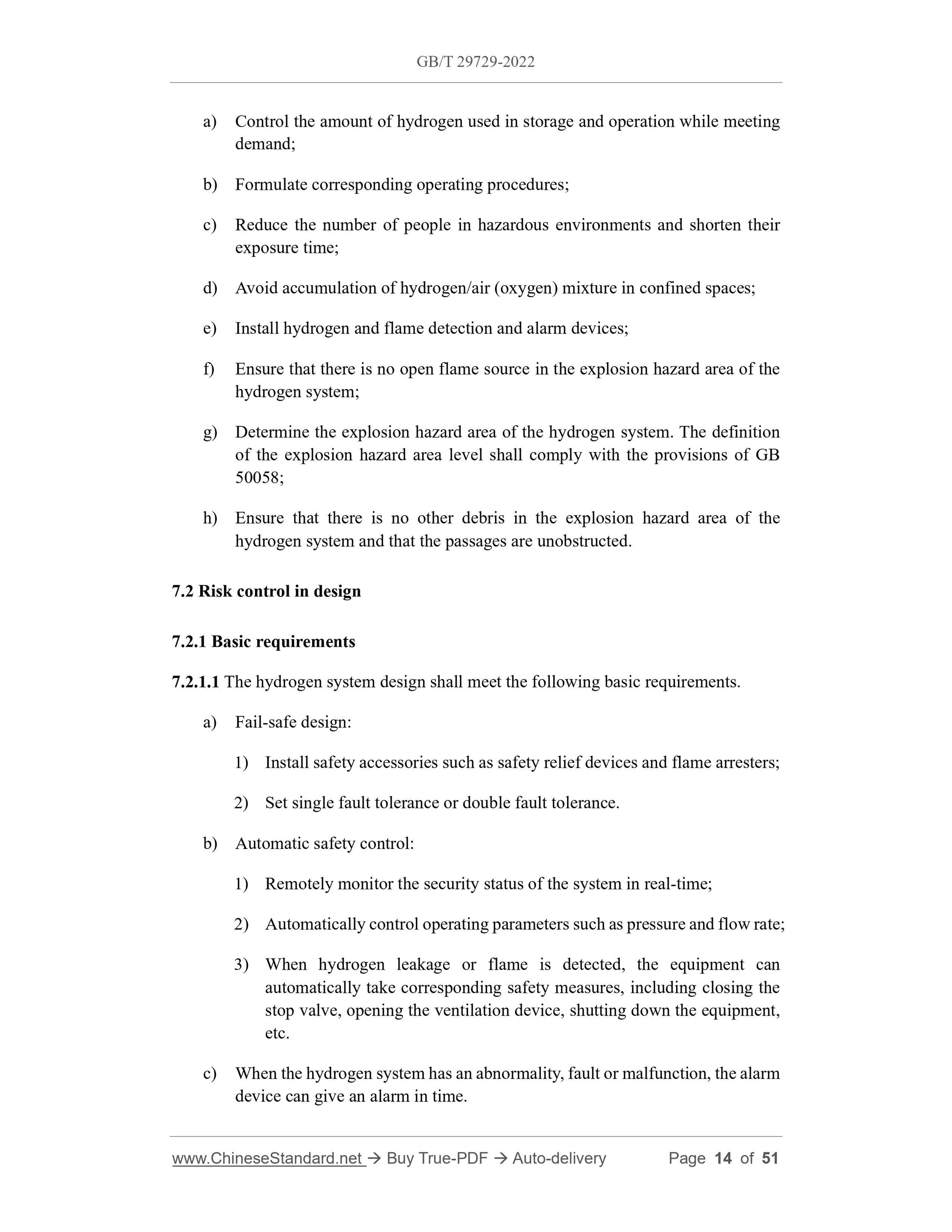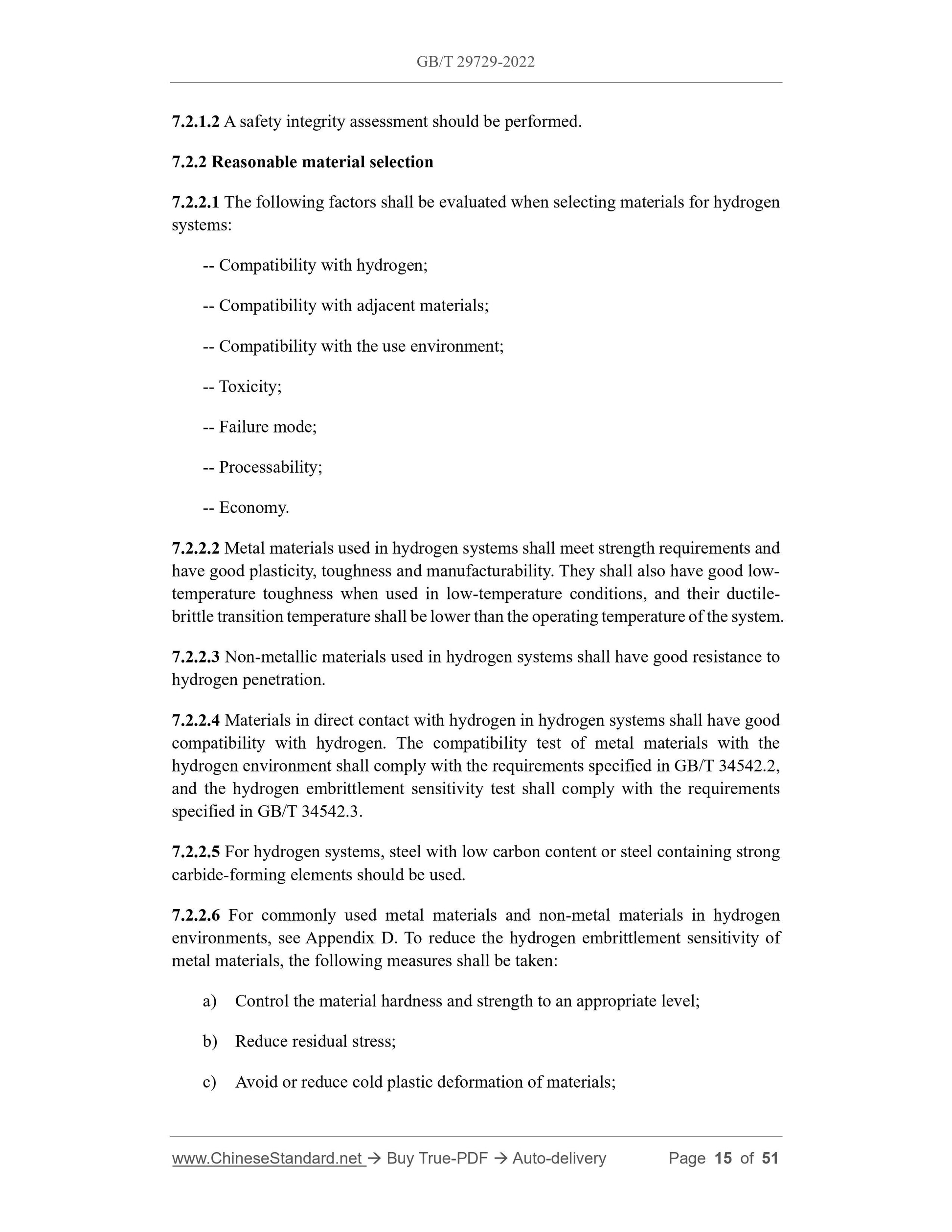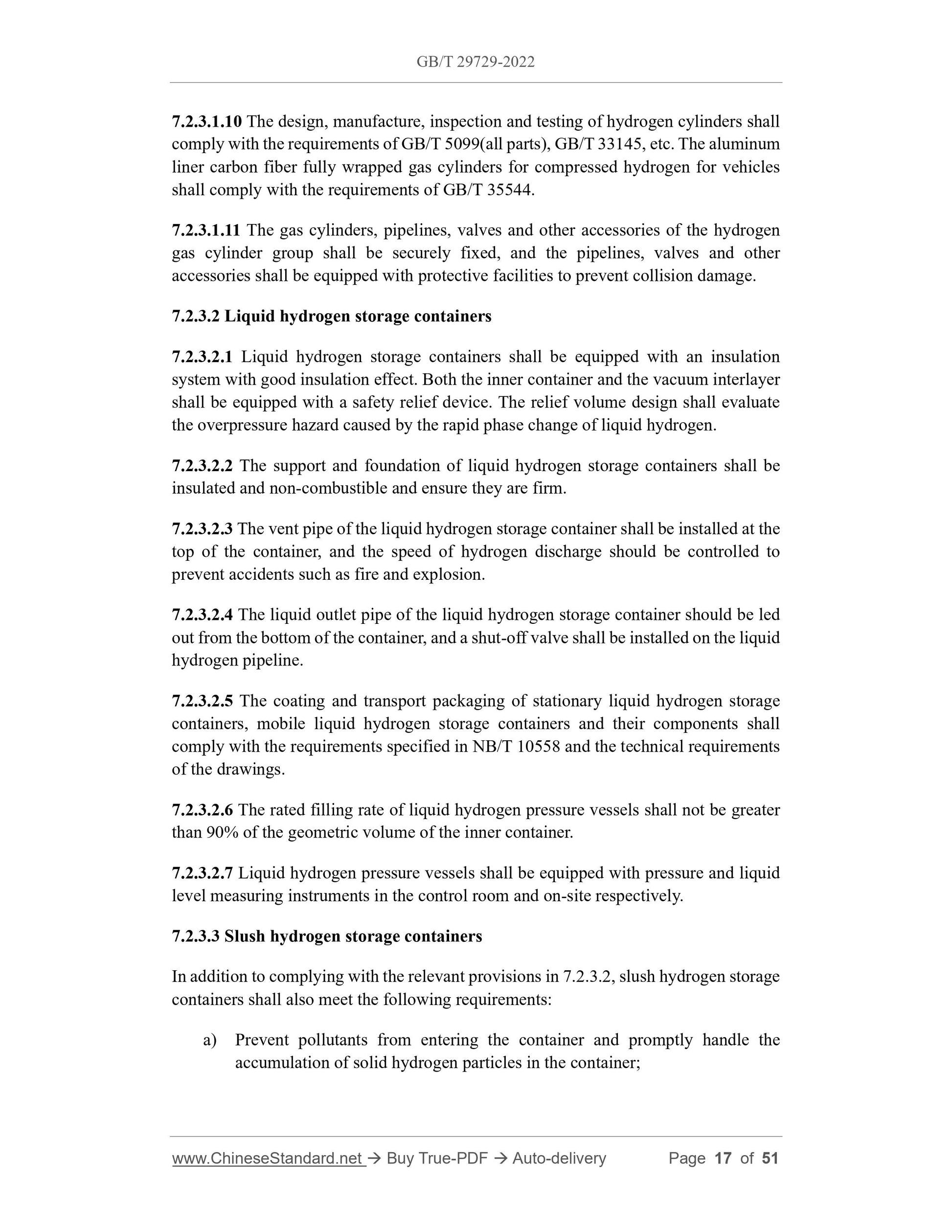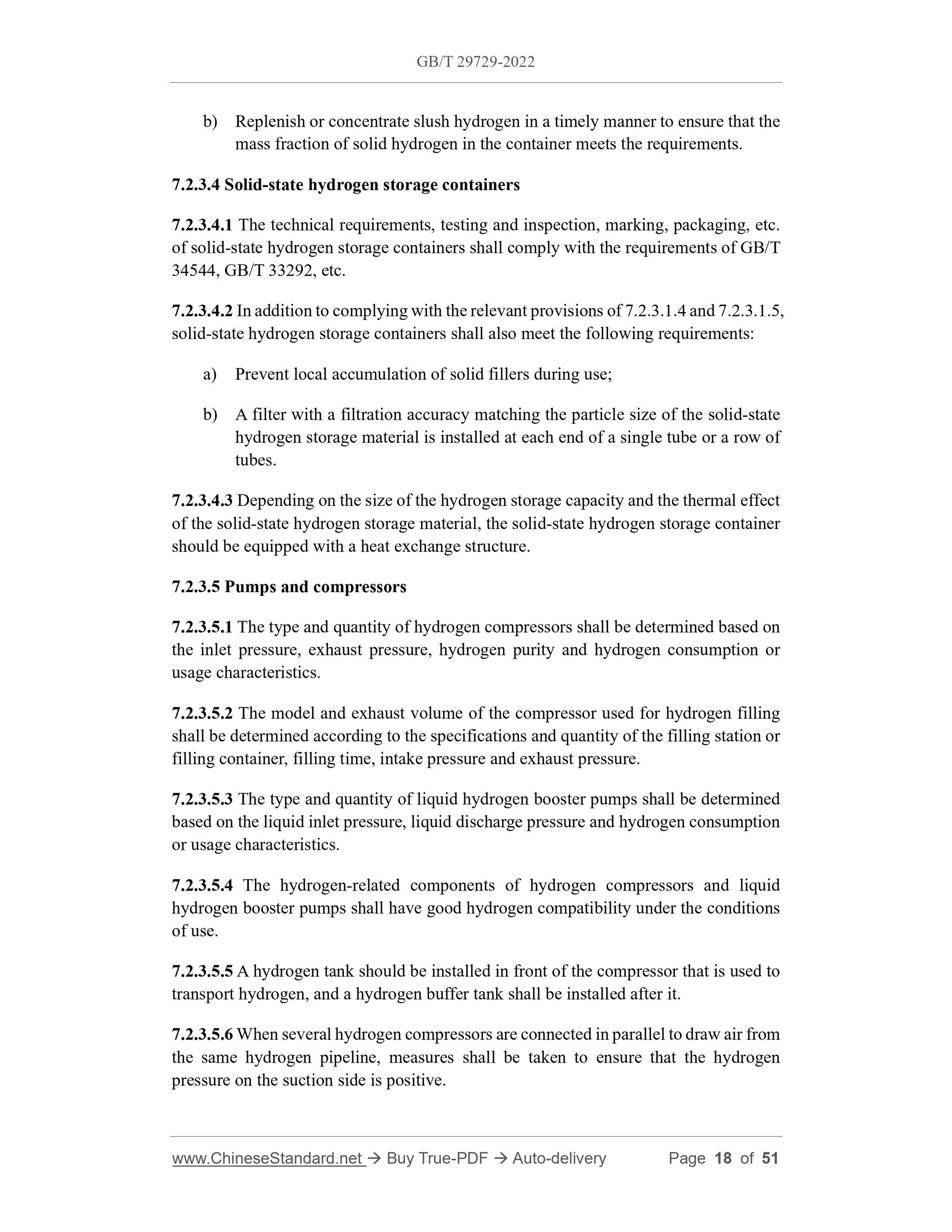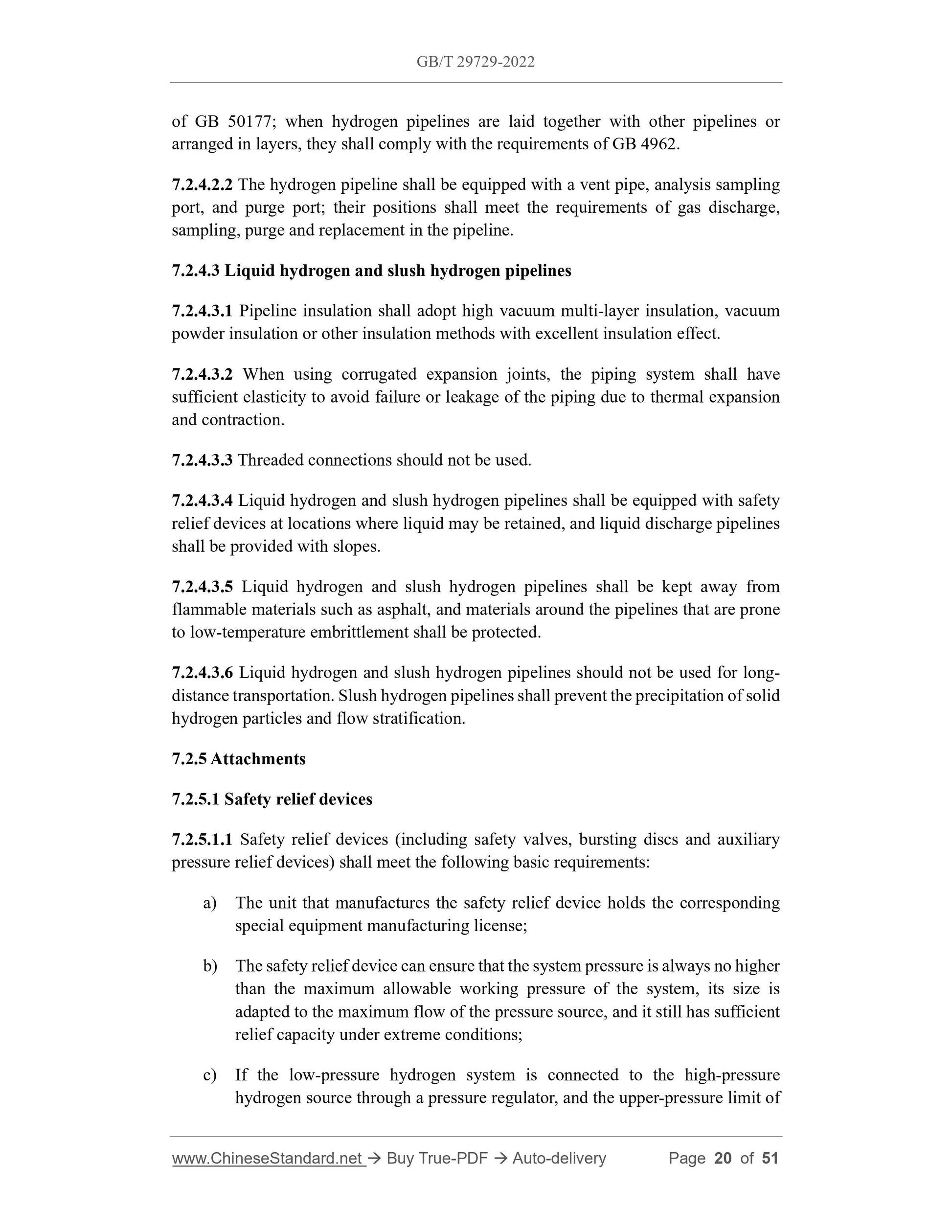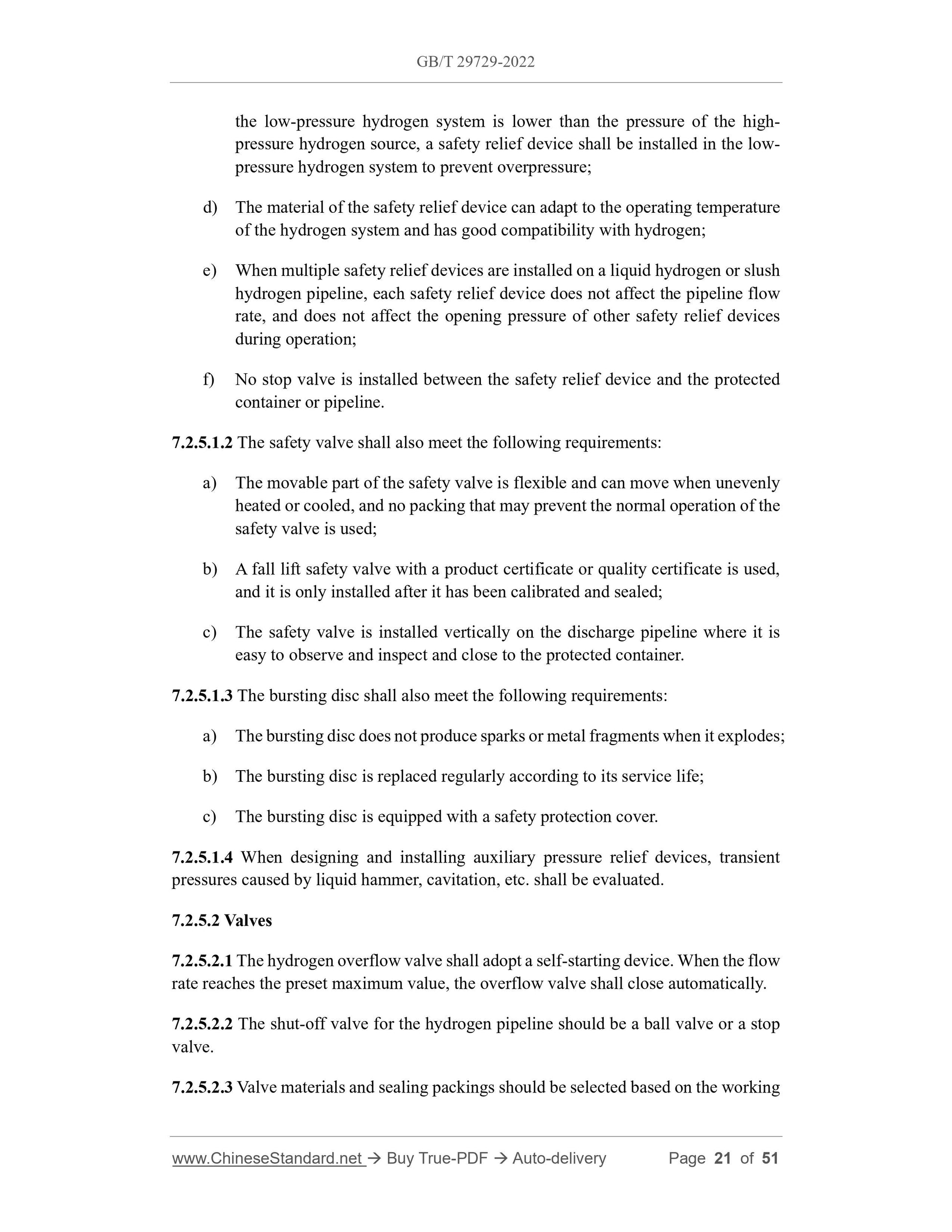1
/
of
12
www.ChineseStandard.us -- Field Test Asia Pte. Ltd.
GB/T 29729-2022 English PDF (GB/T29729-2022)
GB/T 29729-2022 English PDF (GB/T29729-2022)
Regular price
$430.00
Regular price
Sale price
$430.00
Unit price
/
per
Shipping calculated at checkout.
Couldn't load pickup availability
GB/T 29729-2022: Essential requirements for the safety of hydrogen systems
Delivery: 9 seconds. Download (and Email) true-PDF + Invoice.Get Quotation: Click GB/T 29729-2022 (Self-service in 1-minute)
Newer / historical versions: GB/T 29729-2022
Preview True-PDF
Scope
This document specifies the categories of hydrogen systems, the basic characteristicsof hydrogen, the hazardous factors of hydrogen systems and the basic requirements for
risk control.
This document applies to the design and use of hydrogen production, storage,
transportation and application systems.
Basic Data
| Standard ID | GB/T 29729-2022 (GB/T29729-2022) |
| Description (Translated English) | Essential requirements for the safety of hydrogen systems |
| Sector / Industry | National Standard (Recommended) |
| Classification of Chinese Standard | F19 |
| Classification of International Standard | 27.010 |
| Word Count Estimation | 34,347 |
| Date of Issue | 2022-12-30 |
| Date of Implementation | 2023-04-01 |
| Older Standard (superseded by this standard) | GB/T 29729-2013 |
| Issuing agency(ies) | State Administration for Market Regulation, China National Standardization Administration |
Share
